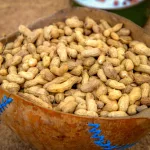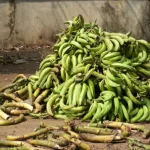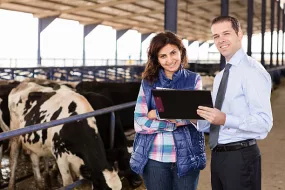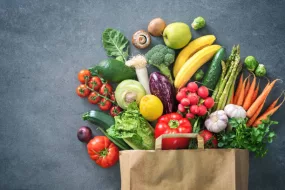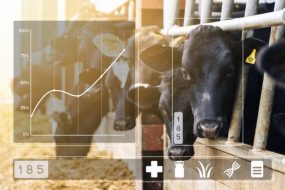In the ever-changing realm of agriculture, embracing innovation is imperative for long-term success. With the rapid advancement of technology and growing environmental concerns, the agricultural industry offers an abundance of chances for those willing to adapt. If you aspire to establish yourself in the agricultural sector, you have landed on the right page. This article delves into the top 20 innovative agriculture business ideas worth exploring.
1. Vertical Farming
Cultivating Success in the Third Dimension
When we think of farming, we often picture vast expanses of fields under the open sky, with rows of crops stretching as far as the eye can see. But what if we told you that the future of agriculture is heading in a different direction—upward? Welcome to the world of vertical farming, where innovation knows no bounds.
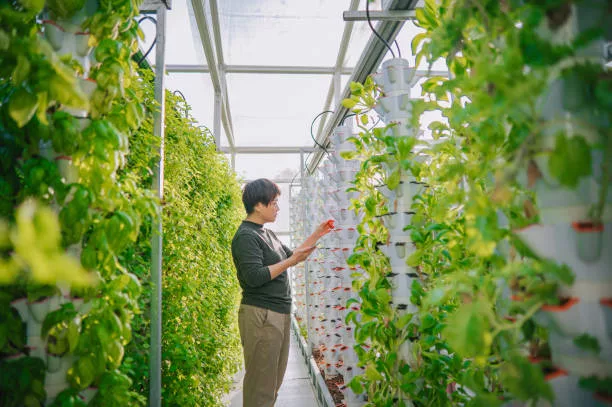
What is Vertical Farming?
Vertical farming is a groundbreaking agricultural technique that reimagines traditional farming by growing crops in vertically stacked layers or inclined surfaces, rather than in a single horizontal plane. This innovative approach is a response to the challenges facing modern agriculture, including land scarcity, climate change, and resource limitations.
READ, ALSO >>>> Discover The 10 Proven Strategies for Successful Food and Agribusiness Management
How Does Vertical Farming Work?
Vertical farms utilize controlled environments and advanced cultivation methods to create optimal conditions for plant growth. Here’s how it works:
- Stacked Growing Beds: Vertical farms consist of multiple stacked layers or shelves, each equipped with trays or containers for growing plants. These beds can go as high as several stories, effectively maximizing the use of space.
- Hydroponics or Aeroponics: Instead of traditional soil, many vertical farms use hydroponic or aeroponic systems. Hydroponics involves growing plants in nutrient-rich water solutions, while aeroponics uses a mist or air to deliver nutrients. This method conserves water and promotes faster growth.
- LED Grow Lights: Given the controlled environment, artificial lighting is crucial. LED grow lights are used to mimic the sun’s spectrum, providing plants with the right amount of light for photosynthesis.
- Climate Control: Temperature, humidity, and carbon dioxide levels are carefully monitored and adjusted to create an ideal growing environment. This precise control minimizes the risk of pests and diseases.
- Data and Automation: Many vertical farms are equipped with sensors and automation systems that collect data on plant health and growth. This data-driven approach enables farmers to make informed decisions for optimal yield.
The Advantages of Vertical Farming
Vertical farming offers numerous advantages, making it a compelling choice for modern agriculture:
- Space Efficiency: Vertical farms can be set up in urban areas where land is limited, allowing for fresh produce to be grown closer to consumers.
- Year-Round Cultivation: Controlled environments mean that crops can be grown year-round, unaffected by seasonal changes or adverse weather conditions.
- Resource Efficiency: Vertical farms typically use less water and pesticides than traditional farming methods, reducing the environmental impact.
- Reduced Transportation: With crops grown locally, the need for long-distance transportation is minimized, reducing carbon emissions.
- Higher Yields: Stacking plants optimizes space and can result in higher crop yields per square foot compared to traditional farming.

Challenges and Considerations
While vertical farming holds great promise, it’s essential to consider some challenges:
- High Initial Costs: Setting up a vertical farm can be expensive due to the technology and infrastructure required.
- Energy Consumption: Artificial lighting and climate control systems can lead to increased energy consumption, which may offset some of the environmental benefits.
- Crop Selection: Not all crops are suitable for vertical farming, so careful selection is necessary.
Vertical farming represents a paradigm shift in agriculture, offering a sustainable solution to the challenges of the modern world. While it may not replace traditional farming entirely, it complements it, ensuring a consistent supply of fresh produce, reducing the environmental footprint, and revolutionizing how we think about food production. As technology continues to advance, the sky is the limit for vertical farming, quite literally. So, whether you’re an aspiring farmer, an investor, or simply curious about the future of food, keep an eye on the exciting developments in the world of vertical farming. It’s a green revolution reaching for the stars!
2. Precision Agriculture
In an era where technology touches every aspect of our lives, it’s no surprise that agriculture has also embraced innovation. Precision Agriculture, often referred to as “smart farming,” is at the forefront of this technological revolution. It’s changing the way we cultivate crops and manage livestock, making farming more efficient, sustainable, and data-driven than ever before.

What is Precision Agriculture?
At its core, Precision Agriculture is an approach to farming that uses advanced technology and data analytics to optimize various aspects of agricultural production. Instead of treating entire fields uniformly, farmers can now make highly specific and targeted decisions based on real-time data, resulting in better yields, resource conservation, and cost reduction.
The Key Elements of Precision Agriculture
Precision Agriculture relies on several key elements to function effectively:
- Sensors and Data Collection: Precision Agriculture employs a variety of sensors, such as GPS, weather stations, soil moisture sensors, and drones, to collect data on crop health, soil conditions, weather patterns, and more.
- Data Analysis: The data collected from sensors is processed and analyzed using specialized software. This analysis helps farmers make informed decisions, from when to plant and irrigate to when to apply fertilizers and pesticides.
- Variable Rate Technology (VRT): VRT allows farmers to apply inputs like fertilizers and pesticides at varying rates across a field, rather than using a uniform application. This ensures that resources are used efficiently and reduces waste.
- GPS Guidance Systems: GPS technology enables precise navigation of farming equipment, reducing overlaps and wasted fuel. It also helps create accurate field maps.
- Automated Machinery: Smart tractors and machinery equipped with GPS and automation technology can perform tasks with a high degree of precision, reducing labor costs and improving efficiency.
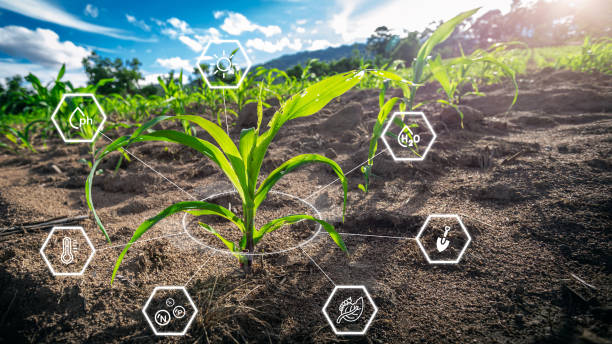
The Advantages of Precision Agriculture
- Increased Crop Yields: By optimizing planting, irrigation, and fertilization, Precision Agriculture can lead to higher crop yields.
- Resource Efficiency: Precise resource management means less waste of water, fertilizers, and pesticides, reducing environmental impact.
- Cost Reduction: By using resources more efficiently and reducing the need for manual labor, Precision Agriculture can lower production costs.
- Sustainability: Reduced chemical use and resource conservation contribute to more sustainable farming practices.
- Data-Driven Decision Making: Farmers can make decisions based on accurate data, improving overall farm management.
Challenges and Considerations
While Precision Agriculture offers immense benefits, there are some challenges and considerations:
- Initial Investment: Adopting Precision Agriculture can require a significant initial investment in technology and training.
- Data Management: Handling and analyzing large amounts of data can be overwhelming without the right tools and skills.
- Privacy and Security: Data security and privacy concerns must be addressed when collecting and sharing sensitive farm data.
Precision Agriculture represents a powerful shift in farming practices, aligning them with the data-driven world of the 21st century. It empowers farmers to be more efficient, sustainable, and profitable while reducing the environmental footprint of agriculture. As technology continues to advance, Precision Agriculture will only become more accessible and integral to the future of farming. It’s a new era for agriculture, where every seed, every drop of water, and every acre of land is optimized for success, and the results are growing abundantly clear.
3. AgTech Startups
In an age where technology shapes every facet of our lives, it’s no surprise that the agricultural sector is also experiencing a digital revolution. Agricultural Technology, or AgTech, startups are at the forefront of this transformation, leveraging cutting-edge technology to address the challenges of modern farming. These startups are not just changing the way we farm; they are redefining the future of agriculture itself.
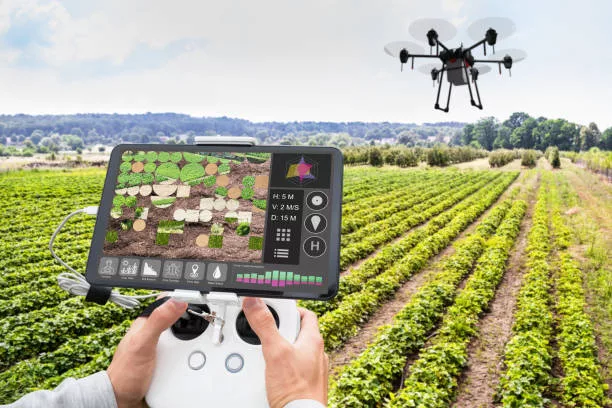
What is AgTech?
AgTech, short for Agricultural Technology, encompasses a wide range of innovations and startups that aim to improve and revolutionize various aspects of agriculture. These innovations span from farm management software to advanced robotics and everything in between. The common thread is the integration of technology into agriculture to make it more efficient, sustainable, and productive.
The Diversity of AgTech Startups
The world of AgTech is incredibly diverse, with startups focusing on various aspects of farming and agriculture:
- Farm Management Software: Startups in this category develop software and platforms that enable farmers to monitor and manage their farms more effectively. These tools provide insights into crop health, weather conditions, and resource management.
- Precision Agriculture: As mentioned in a previous article, precision agriculture is a key area of innovation. AgTech startups in this sector develop technologies like drones, GPS-guided machinery, and data analytics to optimize farming practices.
- Agrifood Tech: These startups work on innovations related to food production, including alternative proteins, food processing, and distribution logistics. They aim to make food production more sustainable and efficient.
- AgRobotics: Robotics and automation play a significant role in modern agriculture. AgTech startups in this category develop autonomous tractors, robotic harvesters, and even drones for crop monitoring.
- Biotechnology: Some startups focus on genetic engineering and biotechnology to create crops that are more resistant to pests, diseases, and adverse weather conditions.
The Advantages of AgTech Startups
- Increased Efficiency: AgTech innovations streamline farming processes, reducing labor requirements and increasing overall efficiency.
- Resource Conservation: Precision agriculture and data-driven decision-making help farmers use resources like water, fertilizers, and pesticides more efficiently.
- Sustainability: Many AgTech solutions are designed with sustainability in mind, reducing the environmental impact of agriculture.
- Improved Crop Yields: Through better monitoring and management, AgTech startups contribute to higher crop yields and better-quality produce.
- Global Impact: AgTech startups have the potential to address global food security challenges by increasing agricultural productivity.
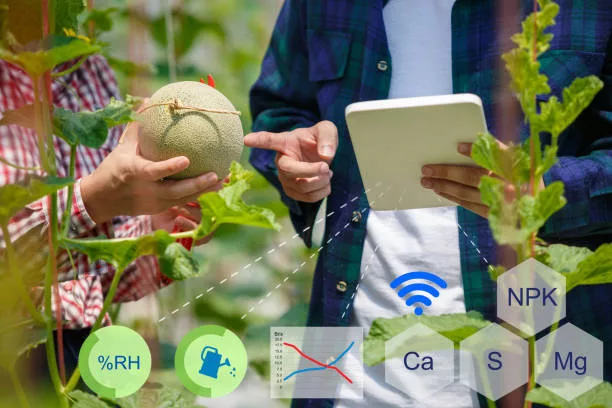
Challenges and Considerations
Despite the promise of AgTech startups, there are challenges to be aware of:
- Access and Adoption: Not all farmers have access to or are willing to adopt new technologies, which can slow down the widespread adoption of AgTech solutions.
- Data Privacy: AgTech often involves collecting and analyzing large amounts of farm data. Ensuring the privacy and security of this data is crucial.
- Regulatory Hurdles: Some AgTech innovations may face regulatory hurdles or resistance from traditional agricultural practices.
AgTech startups are pioneers in transforming agriculture into a high-tech, data-driven industry. Their innovations hold the promise of a more sustainable, efficient, and productive future for farming. As these startups continue to develop and refine their technologies, they will play a pivotal role in addressing the global challenges of feeding a growing population while minimizing the environmental impact of agriculture. For investors, entrepreneurs, and anyone passionate about the future of food, AgTech startups are fertile ground for innovation and a promising path toward a more sustainable and abundant food supply.
4. Hydroponics
When we think of traditional farming, we envision lush fields of crops swaying in the breeze, their roots nestled in rich, fertile soil. But what if we told you that there’s a way to grow plants without soil, in a controlled environment, using water enriched with nutrients? That’s the magic of hydroponics. It’s not just a gardening technique; it’s a green revolution that’s changing the way we think about agriculture.
What is Hydroponics?
At its core, hydroponics is a method of growing plants without soil. Instead, plants are placed in a nutrient-rich water solution that provides all the essential elements they need to thrive. This approach offers precise control over growing conditions, making it possible to grow crops in various settings, from greenhouses to urban apartments.

How Does Hydroponics Work?
Hydroponics relies on a few key principles:
- Nutrient Solution: Plants require a mix of nutrients to grow, including nitrogen, phosphorus, and potassium. In hydroponics, these nutrients are dissolved in water and delivered directly to the plants’ roots.
- Growing Medium: While hydroponics doesn’t use soil, it often employs a growing medium like coconut coir, perlite, or vermiculite to support the plants and provide stability.
- Water and Oxygen: In a hydroponic system, oxygen is delivered to the roots through the water. This ensures that plants receive not only the nutrients they need but also the oxygen required for healthy growth.
- Controlled Environment: Hydroponic systems can be set up indoors or in greenhouses, allowing growers to control factors like temperature, humidity, and light to create optimal growing conditions.
Types of Hydroponic Systems
There are several types of hydroponic systems, each with its own advantages:

- Nutrient Film Technique (NFT): In this system, a thin film of nutrient solution flows over the roots of the plants, providing them with nutrients while also allowing for oxygen exchange.
- Deep Water Culture (DWC): Plants are suspended in a nutrient solution with oxygen-rich air stones bubbling through the water to provide oxygen to the roots.
- Drip System: A drip system delivers a nutrient solution to the base of each plant through a network of tubes and emitters.
- Aeroponics: This system uses a mist or aerosol to deliver nutrients directly to the roots, allowing for maximum oxygen uptake.
The Advantages of Hydroponics
Hydroponics offers numerous benefits that make it an attractive option for modern agriculture:
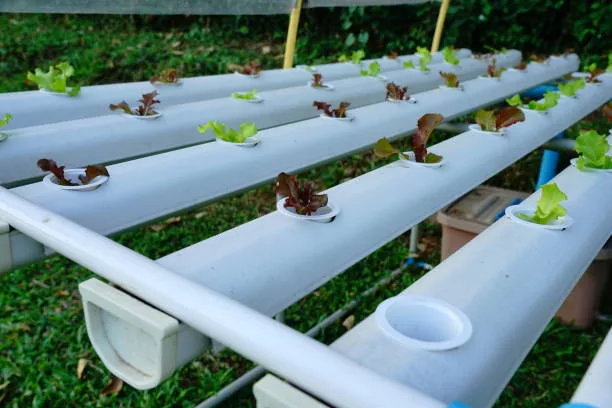
- Water Efficiency: Hydroponics uses significantly less water than traditional soil-based farming because it recirculates the nutrient solution.
- Faster Growth: With precise control over growing conditions, hydroponically grown plants often grow faster and produce higher yields.
- Space Efficiency: Hydroponic systems can be set up vertically or in small spaces, making them ideal for urban farming and maximizing land use.
- Reduced Pest and Disease Pressure: Soil-borne pests and diseases are less of a concern in hydroponic systems, reducing the need for chemical treatments.
- Year-Round Cultivation: Hydroponics allows for year-round crop production, unaffected by seasonal changes.
Challenges and Considerations
While hydroponics offers many advantages, it’s important to consider a few challenges:
- Initial Investment: Setting up a hydroponic system can be expensive due to the cost of equipment and infrastructure.
- Expertise Required: Successful hydroponic farming requires knowledge of nutrient management, pH levels, and system maintenance.
- Resource Management: Careful management of nutrient solution, water, and energy is essential to keep operating costs in check.
Hydroponics represents a revolutionary approach to agriculture, one that challenges conventional notions of farming and resource management. With its potential to conserve water, reduce the environmental impact, and provide fresh produce in urban areas, hydroponics is not just a method of growing plants; it’s a glimpse into the future of sustainable, efficient, and innovative agriculture. As technology continues to advance, hydroponics will likely play an increasingly important role in our quest to feed a growing global population while preserving our planet’s resources. So, whether you’re a green-thumbed enthusiast or a forward-thinking farmer, consider taking the plunge into the world of hydroponics and discover the greener, smarter, and more efficient way to cultivate success.
5. Aquaponics
Imagine a system where fish and plants work together in harmony, benefiting each other while producing fresh, organic food. That’s the beauty of aquaponics, a sustainable farming method that combines aquaculture (fish farming) and hydroponics (soilless plant cultivation) into a single, closed-loop ecosystem. In aquaponics, waste from fish becomes nutrients for plants, and in return, the plants purify the water for the fish. It’s a win-win-win scenario for the environment, farmers, and consumers.
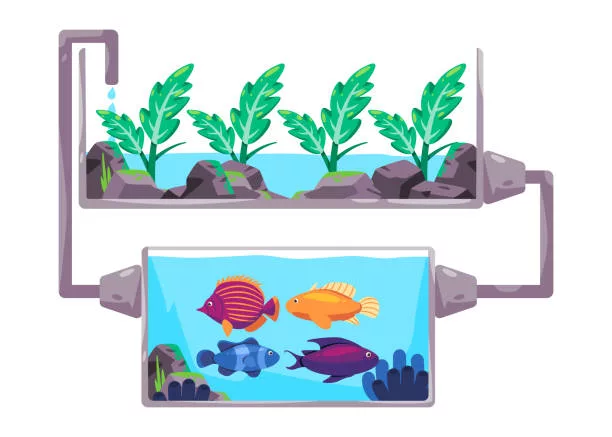
How Does Aquaponics Work?
At its core, aquaponics relies on a few key components:
- Fish Tank: This is where the fish are raised. Commonly used fish species include tilapia, trout, and catfish, but you can choose species based on your location and market demand.
- Grow Beds: Above the fish tank, there are one or more grow beds filled with a growing medium like gravel or expanded clay pellets. Plants are cultivated in these beds.
- Pumps and Pipes: Water from the fish tank is pumped up to the grow beds, where it irrigates and nourishes the plants. As water trickles through the growing medium, it becomes oxygenated and purified.
- Beneficial Bacteria: Beneficial bacteria in the growing medium convert ammonia from fish waste into nitrates, which serve as a natural fertilizer for the plants.
- Plants: In the grow beds, a variety of plants can be grown, from leafy greens like lettuce and kale to herbs and even fruiting plants like tomatoes and peppers.
- Water Returns to the Fish Tank: After passing through the grow beds, the now-filtered and nutrient-rich water is returned to the fish tank, completing the cycle.
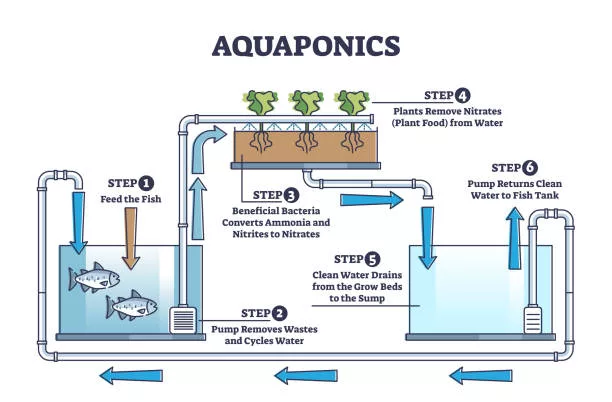
Advantages of Aquaponics
- Resource Efficiency: Aquaponics uses less water compared to traditional soil-based agriculture, as water is recirculated within the system.
- Faster Growth: Plants in aquaponic systems often grow faster due to the constant supply of nutrients and oxygen.
- Sustainable: It’s a closed-loop system that produces both fish and plants sustainably, minimizing waste and reducing the need for synthetic fertilizers.
- Year-Round Cultivation: Aquaponic systems can be operated year-round, making it ideal for growing fresh produce regardless of the season.
- Diverse Produce: Aquaponics can produce a wide range of crops, from leafy greens to herbs and fruiting plants.
- Reduced Pests and Diseases: The absence of soil minimizes soil-borne pests and diseases, reducing the need for pesticides.
Challenges and Considerations
While aquaponics has many advantages, it’s important to be aware of the following challenges:
- Initial Investment: Setting up an aquaponic system can be expensive due to the cost of equipment, tanks, and infrastructure.
- Expertise Required: Successful aquaponic farming requires knowledge of fish husbandry, plant care, water chemistry, and system maintenance.
- Fish Health: Keeping fish healthy is crucial, and this may require monitoring and occasional treatments.
Aquaponics represents a remarkable fusion of aquaculture and hydroponics, creating a self-sustaining ecosystem that benefits both plants and fish. As concerns about sustainable agriculture and food security grow, aquaponics offers a compelling solution that conserves resources, reduces waste, and provides a steady supply of fresh, organic produce and fish. Whether you’re a small-scale urban farmer or an entrepreneur with a vision for a sustainable future, aquaponics is an innovative and environmentally friendly way to cultivate success. It’s a farming method that not only nourishes bodies but also nurtures our planet. Dive in and explore the world of aquaponics, where sustainability meets deliciousness, and where the future of farming is taking shape.
6. Urban Farming
As our world becomes more urbanized, a green revolution is taking root in the heart of our cities. Urban farming is not just a response to the challenges of space and sustainability; it’s a movement that’s transforming concrete jungles into green oases. In this article, we’ll explore the thriving world of urban farming, where agriculture meets innovation, and communities are sowing the seeds of a greener, healthier future.

What is Urban Farming?
Urban farming, also known as urban agriculture or urban gardening, refers to the practice of growing food and other crops within urban areas. This can take many forms, from rooftop gardens and community plots to vertical farms and hydroponic systems in abandoned warehouses. The primary goal is to bring food production closer to where people live, reducing the distance food travels from farm to table.
Types of Urban Farming
Urban farming is a versatile practice that adapts to various urban settings:
Rooftop Gardens: Utilizing rooftops for gardening or even small-scale farming is an excellent way to maximize space in densely populated areas.

Community Gardens: Community gardens are shared spaces where residents come together to cultivate crops, fostering a sense of community and providing fresh produce.

Vertical Farming: Vertical farms use stacked shelves or towers to grow crops indoors, often in controlled environments like warehouses or shipping containers.
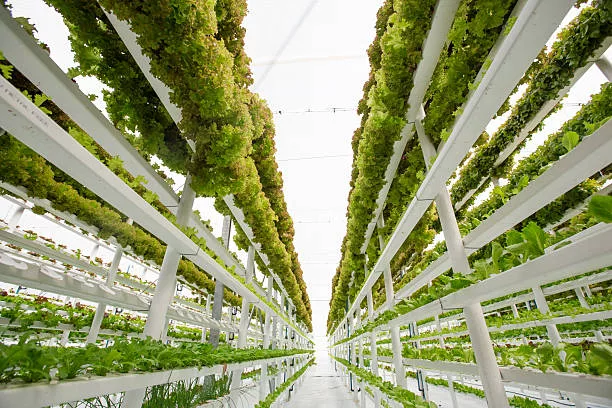
Aquaponics and Hydroponics: Soilless systems like aquaponics and hydroponics thrive in urban settings, as they can be set up indoors and are highly resource-efficient.
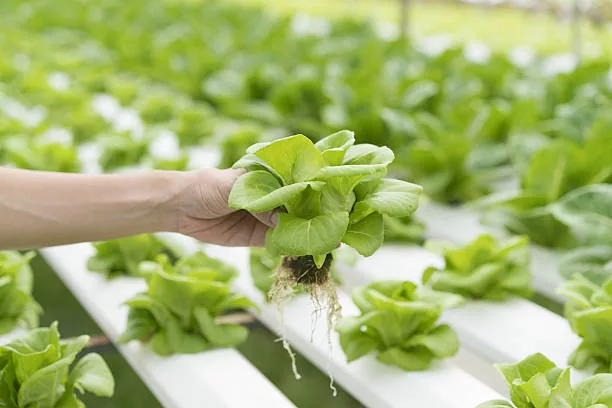
Window Boxes and Balcony Gardens: Even in small apartments, urban dwellers can grow herbs, vegetables, and even dwarf fruit trees in containers.
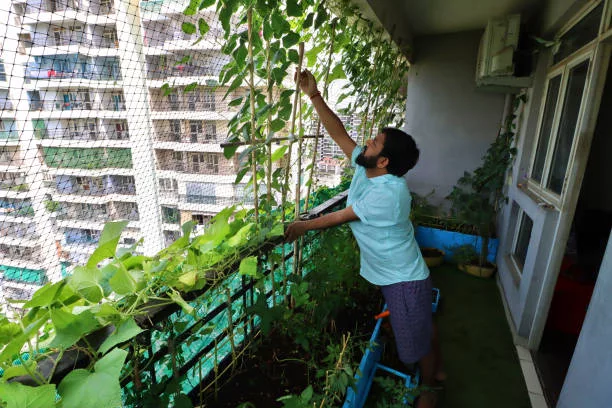
The Advantages of Urban Farming
- Local Food Production: Urban farming reduces the distance food travels from farm to table, promoting locally grown, fresh produce.
- Resource Efficiency: Innovative techniques like hydroponics and aquaponics use less water and space compared to traditional farming.
- Sustainable Practices: Many urban farmers embrace sustainable farming practices, reducing environmental impact.
- Community Building: Community gardens and urban farms bring people together, fostering a sense of connection and shared purpose.
- Food Security: By growing their own food, urban communities can enhance their food security and reduce dependence on distant food sources.
Challenges and Considerations
Urban farming also faces some challenges:
- Space Limitations: Space in urban areas is at a premium, and securing land for farming can be difficult.
- Zoning Regulations: Some cities have zoning regulations that may restrict or regulate urban farming practices.
- Soil Quality: In some urban areas, soil quality may be poor due to contamination, requiring raised beds or soil amendments.
Urban farming is more than just a trend; it’s a vital response to the pressing challenges of our time. It’s a movement that reconnects urban dwellers with the earth, promotes sustainability, and enhances food security. Whether you’re a city dweller with a small balcony garden or part of a community cultivating a shared plot, urban farming offers a meaningful way to contribute to a greener, healthier future. As urban areas continue to grow, so too will the opportunities for innovation in urban agriculture. So, grab a trowel, plant some seeds, and be part of the urban farming revolution that’s cultivating change right in the heart of our cities.
7. Smart Greenhouses
Imagine a greenhouse that thinks and acts like a seasoned farmer, constantly monitoring and adjusting conditions to optimize plant growth. That’s the marvel of smart greenhouses, where cutting-edge technology meets agriculture to create an environment where plants thrive, resource use is minimized, and sustainability takes root. In this article, we’ll delve into the world of smart greenhouses, where innovation and agriculture come together to cultivate a greener, more efficient future.
What are Smart Greenhouses?
Smart greenhouses are advanced agricultural structures equipped with sensors, automation systems, and data analytics. These technologies work in harmony to create an ideal microclimate for plant growth. Unlike traditional greenhouses, smart greenhouses can automatically control variables like temperature, humidity, and light to maximize yields and minimize resource use.

Key Features of Smart Greenhouses
- Sensor Network: Smart greenhouses are equipped with sensors that monitor various environmental parameters, such as temperature, humidity, light intensity, and carbon dioxide levels.
- Automation Systems: Based on data from sensors, automation systems can adjust climate control systems, shading, and irrigation to provide optimal conditions for plants.
- Data Analytics: The collected data is analyzed to make informed decisions about when and how to adjust the greenhouse environment.
- Energy-Efficient Design: Smart greenhouses often incorporate energy-efficient technologies, such as solar panels and advanced insulation, to reduce energy consumption.
- Remote Monitoring: Many smart greenhouse systems can be monitored and controlled remotely via smartphones or computers, allowing farmers to make adjustments even when they’re not on-site.
Advantages of Smart Greenhouses
- Increased Yields: Smart greenhouses create ideal conditions for plant growth, resulting in higher yields and improved crop quality.
- Resource Efficiency: Precise control over environmental conditions reduces water and energy consumption, making smart greenhouses more sustainable.
- Year-Round Cultivation: With climate control, smart greenhouses can extend the growing season and enable year-round production.
- Reduced Pest and Disease Pressure: By maintaining a controlled environment, smart greenhouses can minimize the risk of pests and diseases.
- Local Production: Smart greenhouses can be located in urban areas, reducing the distance food travels from farm to table.

Challenges and Considerations
While smart greenhouses offer numerous benefits, they also come with some challenges:
- Cost: The initial investment in smart greenhouse technology can be significant, which may deter smaller-scale farmers.
- Expertise: Operating a smart greenhouse requires knowledge of technology, sensors, and data analysis.
- Energy Dependence: Smart greenhouses rely on energy sources for climate control, which can increase operational costs and environmental impact if not sourced sustainably.
Smart greenhouses represent the future of sustainable agriculture, where technology and nature work hand in hand to produce more with less. These innovative structures not only maximize yields and reduce resource use but also pave the way for year-round, locally sourced-produce. Whether you’re a commercial farmer, a researcher, or simply someone passionate about sustainable food production, smart greenhouses offer an exciting glimpse into a greener, more efficient future. As technology continues to advance, so too will the possibilities for smart greenhouse farming, creating a healthier and more sustainable food supply for us all. So, open the door to a smart greenhouse, where innovation and agriculture unite to cultivate a more promising tomorrow.
8. Organic Farming
In a world where health-conscious consumers seek natural and sustainable options, organic farming has emerged as a beacon of environmentally friendly, health-focused agriculture. Organic farming is not merely a method; it’s a philosophy that prioritizes soil health, biodiversity, and sustainable practices. In this article, we’ll delve into the world of organic farming, where nature and farming harmoniously coexist to provide wholesome, pesticide-free produce.
What is Organic Farming?
Organic farming is an agricultural approach that emphasizes natural and sustainable methods while minimizing synthetic inputs such as pesticides, fertilizers, and genetically modified organisms (GMOs). The primary goal is to work in harmony with nature, promoting soil health, biodiversity, and ecological balance.

Key Principles of Organic Farming
Organic farming is guided by several core principles:
- Soil Health: Organic farmers prioritize building and maintaining healthy soil. This is done through composting, cover cropping, and avoiding synthetic chemicals that can harm beneficial microorganisms.
- Crop Diversity: Organic farms often grow a variety of crops rather than monocultures, promoting biodiversity and reducing the risk of pests and diseases.
- Avoidance of Synthetic Inputs: Organic farmers do not use synthetic pesticides, herbicides, or fertilizers. Instead, they rely on natural alternatives like neem oil, companion planting, and compost.
- No GMOs: Organic farming prohibits the use of genetically modified organisms, promoting crop varieties that have not been genetically altered.
- Animal Welfare: Organic livestock farming emphasizes humane treatment, access to the outdoors, and organic feed.
- Sustainability: Organic farming practices are designed to be environmentally sustainable, conserving water, reducing soil erosion, and minimizing environmental impact.
Advantages of Organic Farming
- Healthier Food: Organic produce is often perceived as healthier because it’s grown without synthetic pesticides and herbicides.
- Environmental Benefits: Organic farming promotes biodiversity, reduces chemical runoff, and conserves natural resources.
- Soil Health: Organic farming practices improve soil fertility and structure, leading to long-term sustainability.
- Support for Local Communities: Organic farming can stimulate local economies and provide opportunities for small-scale farmers.
- Reduced Exposure to Chemicals: Workers on organic farms are not exposed to synthetic chemicals, promoting safer working conditions.
Challenges and Considerations
While organic farming offers numerous benefits, it also faces some challenges:
- Lower Yields: Organic farming can sometimes result in lower crop yields compared to conventional farming, which may impact food availability and prices.
- Transition Period: Converting a conventional farm to organic can be a time-consuming and costly process, with reduced yields during the transition period.
- Market Prices: Organic produce often commands higher prices, which can make it less accessible to some consumers.
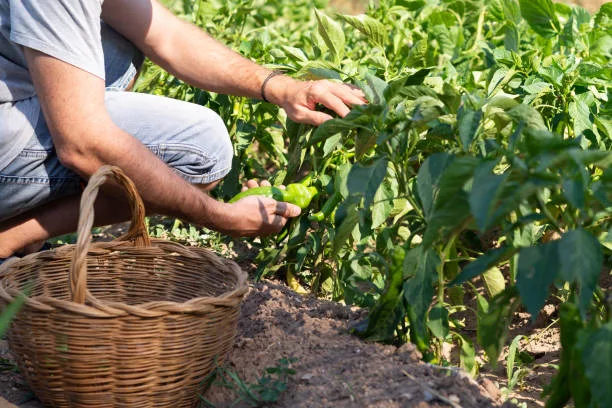
Organic farming is more than just a method; it’s a commitment to a healthier planet and a more sustainable food system. It’s a farming philosophy that respects the Earth, values biodiversity, and prioritizes the well-being of both consumers and the environment. Whether you’re an advocate for healthy living, an environmentally conscious consumer, or a farmer looking to embrace sustainable practices, organic farming offers a path to a greener, more wholesome future. It’s a journey where the soil is nurtured, the Earth is respected, and the harvest is a celebration of health and sustainability. So, explore the world of organic farming, where every seed sown is a promise of a healthier, more sustainable tomorrow.
9. Beekeeping and Honey Production
In the world of agriculture and food production, few activities are as sweet and rewarding as beekeeping. Beyond the delicious honey it produces, beekeeping plays a vital role in pollinating crops, supporting biodiversity, and providing a sustainable livelihood for beekeepers. In this article, we’ll explore the mesmerizing world of beekeeping and honey production, where the tiny honeybee takes center stage in the grand theater of nature.
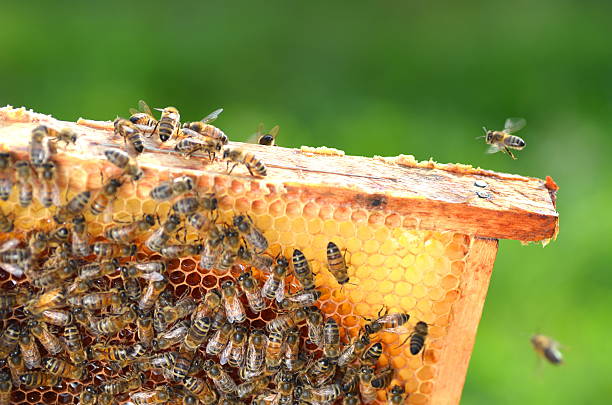
The Art and Science of Beekeeping
Beekeeping, also known as apiculture, is the practice of managing bee colonies in hives to collect honey, beeswax, and other bee-related products. It involves a deep understanding of bee behavior, hive management, and a strong connection to the natural world.
Key Aspects of Beekeeping:
- Hive Types: Beekeepers use various hive designs, with the most common being the Langstroth hive, which consists of removable frames where bees build comb, and store honey.
- Bee Species: The honeybee species commonly kept in hives are Apis mellifera. There are several subspecies adapted to different climates and regions.
- Life Cycle: Bee colonies have a structured social order, with a queen bee, worker bees, and drones. The queen lays eggs, worker bees gather nectar and pollen, and drones mate with the queen.
- Harvesting Honey: Beekeepers harvest honey by carefully removing frames from the hive and extracting honey using centrifugal force.
The Magic of Honey Production
Honey production is a multi-step process that involves the following stages:
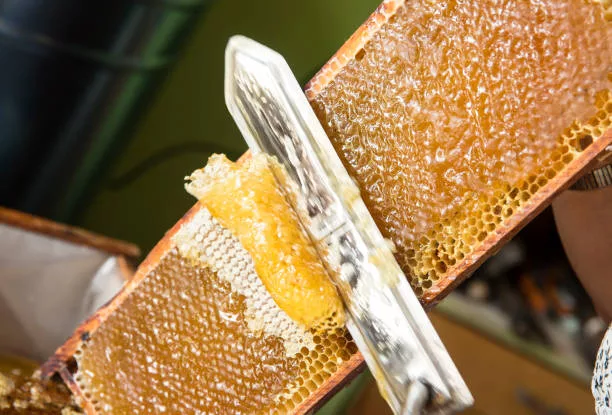
- Foraging: Worker bees collect nectar from flowers using their proboscis, a long, tubular tongue. They store this nectar in their honey stomachs, where enzymes begin the process of breaking down sugars.
- Conversion: Back in the hive, worker bees pass the nectar to other bees, who further process it by regurgitating and re-ingesting it multiple times. This enzymatic process transforms the nectar into honey.
- Comb Filling: The converted honey is stored in comb cells, where it undergoes further moisture reduction. Bees fan the comb with their wings to accelerate the evaporation process.
- Ripening: Once the moisture content reaches about 18%, the bees seal the comb cells with beeswax, indicating that the honey is ripe.
- Harvesting: Beekeepers remove frames filled with capped honeycomb from the hive and extract the honey using centrifugal force or by crushing and straining.
Advantages of Beekeeping and Honey Production
- Pollination: Honeybees are essential pollinators for many crops, contributing to global food production.
- Honey Production: Honey is a delicious, natural sweetener with numerous health benefits and culinary uses.
- Beeswax and Other Products: Beekeeping also yields beeswax, propolis, royal jelly, and bee venom, which have various applications, from candles and cosmetics to supplements.
- Biodiversity: Beekeeping supports biodiversity by helping to maintain healthy bee populations.
- Economic Sustainability: Beekeeping provides income and livelihoods for beekeepers, especially in rural areas.
Challenges and Considerations
Despite its many advantages, beekeeping faces several challenges:

- Pests and Diseases: Honeybee colonies can be susceptible to pests like varroa mites and diseases, which can devastate bee populations.
- Pesticide Exposure: Pesticides can harm honeybees and disrupt pollination.
- Habitat Loss: Urbanization and land development can lead to the destruction of natural habitats for bees.
Beekeeping and honey production are a sweet blend of art, science, and respect for nature. They provide not only delicious honey but also play a crucial role in global agriculture and biodiversity. Beekeepers, whether they tend to a few hives in their backyard or manage large commercial operations, are stewards of these vital pollinators and the honey they produce. So, whether you’re a honey aficionado, an aspiring beekeeper, or simply someone who appreciates the magic of nature, beekeeping, and honey production offer a remarkable journey into the world of the tiny creatures that bring us one of nature’s sweetest gifts.
10. Agritourism
Imagine trading the bustling city streets for the serene countryside, where fresh air, picturesque landscapes, and hands-on experiences await. That’s the essence of agritourism, a growing trend that combines agriculture, tourism, and education. In this article, we’ll embark on a journey into the world of agritourism, where farms become destinations, and visitors become part of the farming experience.
What is Agritourism?
Agritourism, a blend of “agriculture” and “tourism,” refers to activities that allow people to visit farms, ranches, vineyards, and other agricultural operations for recreational, educational, and sometimes even overnight experiences. It’s a bridge that connects urban dwellers with rural life, offering a deeper understanding of where their food comes from and the chance to connect with nature.

Types of Agritourism Activities
Agritourism encompasses a wide range of activities and experiences:
Farm Tours: Visitors can explore farms, learn about different crops, and observe farm animals.
U-Pick Farms: People can pick their own fruits, vegetables, and sometimes even flowers, straight from the field.
Farm-to-Table Dining: Many agritourism destinations offer farm-fresh meals, allowing visitors to savor the flavors of local produce.
Wine and Vineyard Tours: Vineyards often welcome visitors for wine tasting and tours of the winemaking process.
Petting Zoos and Animal Encounters: Farms with animals like goats, chickens, and alpacas offer opportunities for hands-on interactions.
Educational Workshops: Some agritourism sites offer workshops on topics like cheese making, beekeeping, and sustainable farming practices.
Farm Stays: Visitors can spend a night or more on a working farm, participating in farm activities and enjoying the rural lifestyle.

The Advantages of Agritourism
- Education: Agritourism provides valuable educational opportunities, helping people learn about farming, food production, and sustainable agriculture.
- Support for Local Farmers: Agritourism can boost the income of local farmers and support rural economies.
- Connection to Nature: It allows city dwellers to connect with nature, experience farm life, and escape the hustle and bustle of urban living.
- Preservation of Rural Landscapes: By making farming economically viable, agritourism can help preserve rural landscapes and open spaces.
- Culinary Delights: Visitors can savor fresh, locally grown produce and artisanal products.
Challenges and Considerations
Agritourism also faces some challenges:
- Regulations: Zoning and health regulations can vary, making it important for agritourism operators to navigate legal requirements.
- Seasonality: Agritourism activities are often seasonal, depending on crop harvests and weather conditions.
- Infrastructure and Safety: Farms may need to invest in infrastructure and safety measures to accommodate visitors.
Agritourism is more than a vacation; it’s a journey of discovery, a celebration of local culture, and an opportunity to support sustainable agriculture. Whether you’re a family looking for a fun weekend getaway, a food enthusiast eager to taste farm-fresh flavors, or simply someone who craves a deeper connection with the land, agritourism offers a unique and enriching experience. So, pack your bags, put on your farm boots, and embark on a memorable adventure into the heart of rural life, where every visit to a farm becomes an opportunity to grow, learn, and connect.
11. Specialty Crop Farming
In the vast tapestry of agriculture, there are those who dare to specialize, to nurture crops that are unique, valuable, and often brimming with flavors and fragrances that captivate our senses. Specialty crop farming is the art of growing these distinctive plants, whether it’s a rare heirloom tomato, fragrant lavender, or a vineyard of fine wine grapes. In this article, we’ll explore the captivating world of specialty crop farming, where passion and expertise converge to produce nature’s finest treasures.
What are Specialty Crops?
Specialty crops encompass a wide range of plants that are cultivated for their unique characteristics, flavors, fragrances, and high market value. These crops often require specialized knowledge, care, and attention to detail. While the definition of specialty crops can vary, they typically include fruits, vegetables, herbs, and ornamental plants.
Examples of Specialty Crops:
Heirloom Tomatoes: These are old, open-pollinated tomato varieties known for their exceptional taste and unique appearances.
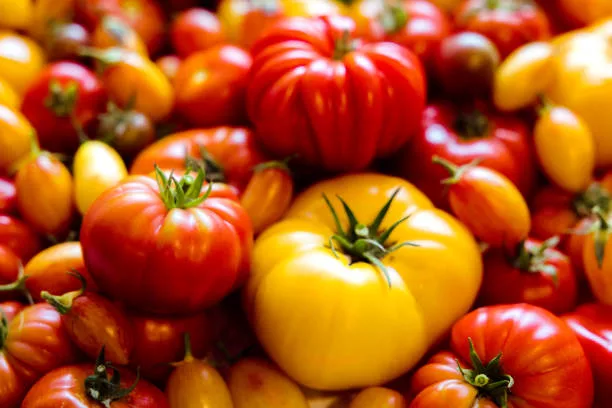
Exotic Fruits: Specialty crop farmers may grow exotic fruits like dragon fruit, passion fruit, or lychee.
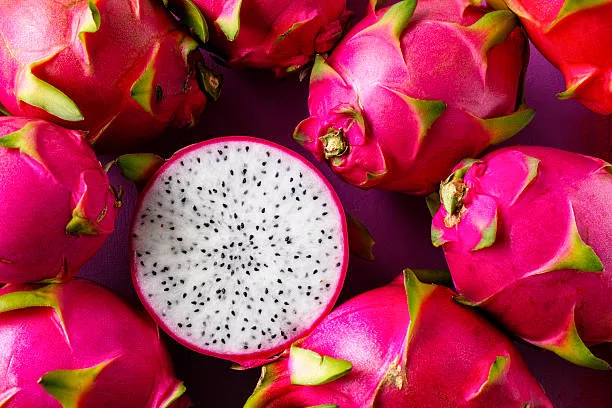
Herbs: Fragrant herbs like lavender, rosemary, and basil are popular specialty crops used in cooking, aromatherapy, and cosmetics.

High-Value Vegetables: Specialty crops can include high-value vegetables such as microgreens, truffles, or gourmet mushrooms.
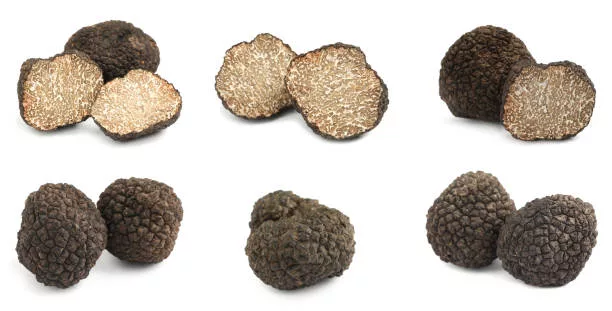
Cut Flowers: Specialty-cut flower farms produce unique and vibrant blooms for florists and markets.

Fine Wine Grapes: Vineyards that specialize in producing high-quality wine grapes for winemaking.

Key Aspects of Specialty Crop Farming
- Expertise: Specialty crop farmers often possess specialized knowledge about crop care, including factors like soil health, irrigation, and pest management.
- Unique Varieties: Heirlooms and rare varieties are often prized in specialty crop farming for their distinct flavors, aromas, or appearances.
- Direct Marketing: Many specialty crop farmers engage in direct marketing to consumers through farmers’ markets, community-supported agriculture (CSA) programs, or online sales.
- Value-Added Products: Some specialty crop farmers create value-added products like artisanal jams, lavender essential oils, or gourmet sauces to diversify their offerings.
The Advantages of Specialty Crop Farming
- High Market Value: Specialty crops often command higher prices in the market due to their uniqueness and quality.
- Diverse Ecosystems: Specialty crop farming can promote biodiversity, as farmers often grow a variety of crops on a single farm.
- Local and Artisanal Appeal: Consumers appreciate locally grown and artisanal products, which are often associated with specialty crops.
- Sustainability: Many specialty crop farmers embrace sustainable farming practices, such as organic or regenerative agriculture.
Challenges and Considerations
Specialty crop farming also comes with challenges:
- Expertise and Knowledge: Successfully growing specialty crops may require specialized knowledge and skills, as these crops can be more demanding than traditional ones.
- Market Volatility: The market for specialty crops can be competitive and volatile, with prices influenced by factors like consumer trends and weather conditions.
- Pest and Disease Management: Unique varieties may be more susceptible to specific pests and diseases, requiring careful monitoring and management.

Specialty crop farming is a testament to the diversity and richness of our natural world. It’s a journey of exploration, where each crop tells a unique story through its flavors, aromas, and appearances. Whether you’re a passionate farmer, a culinary enthusiast, or simply someone who appreciates the finer things in life, specialty crop farming invites you to savor the exceptional and embrace the extraordinary. So, step into the enchanting world of specialty crops, where the soil yields treasures that delight the senses and captivate the heart.
12. Organic Fertilizer Production
In the quest for sustainable agriculture, organic fertilizer production has emerged as a key player, offering a natural and environmentally friendly way to enrich the soil and promote healthy plant growth. Organic fertilizers are derived from living or once-living materials, making them a renewable and eco-conscious choice for farmers and gardeners. In this article, we’ll explore the world of organic fertilizer production, where the principles of nature are harnessed to nurture the soil and cultivate bountiful harvests.
What are Organic Fertilizers?
Organic fertilizers are nutrient-rich materials derived from natural sources such as plant matter, animal waste, and mineral deposits. Unlike synthetic fertilizers, which are chemically manufactured, organic fertilizers provide nutrients in a form that is slowly released into the soil, nourishing plants over time.

Key Components of Organic Fertilizer Production:
- Raw Materials: Organic fertilizers are made from various organic materials, including compost, manure, bone meal, blood meal, fish meal, and seaweed, among others.
- Composting: Composting is a crucial step in organic fertilizer production. Organic matter is broken down by microorganisms, producing nutrient-rich compost that serves as a base for many organic fertilizers.
- Blending and Processing: Raw materials are blended and processed to create specific formulations with the desired nutrient content and release rates.
- Granulation: In some cases, organic fertilizers are granulated to form easy-to-handle pellets or granules.
Types of Organic Fertilizers:
- Compost: Compost is the result of decomposed organic matter and is a valuable soil conditioner and fertilizer.
- Manure-Based Fertilizers: Animal manure, such as cow or chicken manure, can be processed into organic fertilizers rich in nitrogen, phosphorus, and potassium.
- Plant-Based Fertilizers: Plant-based materials like alfalfa meal, kelp meal, and soybean meal are excellent sources of nutrients.
- Bone Meal: Ground bones are a good source of phosphorus and calcium.
- Worm Castings: Vermicompost, or worm castings, are nutrient-rich organic matter produced by earthworms and used as a potent organic fertilizer.
Advantages of Organic Fertilizer Production
- Environmental Sustainability: Organic fertilizers are derived from renewable and biodegradable sources, reducing the environmental impact.
- Soil Health: Organic fertilizers improve soil structure, water retention, and microbial activity, fostering healthy and fertile soils.
- Slow-Release Nutrients: Organic fertilizers release nutrients gradually, providing a consistent source of nourishment for plants and reducing the risk of nutrient leaching.
- Reduced Chemical Dependency: Organic farming practices often reduce the need for synthetic pesticides and fertilizers.
- Improved Crop Quality: Organic fertilizers can enhance crop flavor, aroma, and nutritional value.
Challenges and Considerations
Organic fertilizer production also faces some challenges:
- Lower Nutrient Content: Organic fertilizers generally have lower nutrient concentrations compared to synthetic fertilizers, which can require larger quantities for the same effect.
- Processing Costs: The production of organic fertilizers, especially high-quality formulations, can be more labor-intensive and costly.
- Regulatory Compliance: Organic fertilizers must meet specific standards to be certified as organic, which may involve compliance with regulations and inspections.
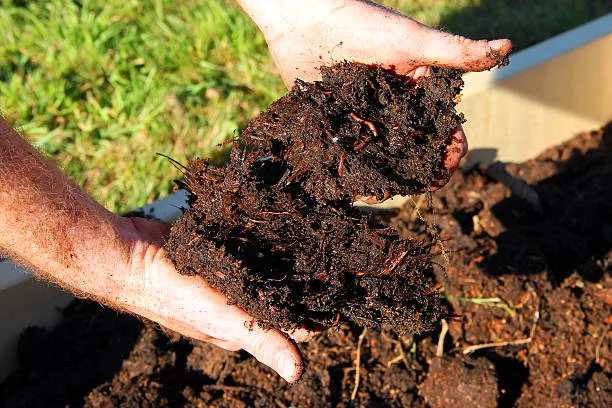
Organic fertilizer production is a testament to the harmony between agriculture and nature. It’s a sustainable approach that enriches the soil, promotes healthy plant growth, and nurtures the planet. Whether you’re a farmer committed to sustainable practices, a gardener tending to your backyard oasis, or simply someone who values the health of the earth, organic fertilizer production offers a path to greener, more abundant harvests. So, join the journey into the world of organic fertilizers, where nature’s wisdom is harnessed to cultivate healthier soils, healthier plants, and a healthier planet.
13. Livestock Farming with a Twist
livestock farming has taken on new dimensions and innovative approaches. From unique animal breeds to unconventional rearing methods, these “twists” in livestock farming are reshaping the industry. In this article, we’ll dive into the world of livestock farming with a twist, where creativity meets tradition, and where animals are more than just commodities—they’re partners in sustainability and culinary excellence.

Exploring the Twists in Livestock Farming:
- Heritage Breeds: While conventional farming often focuses on high-yield breeds, some farmers are championing heritage breeds. These traditional livestock breeds are often adapted to specific regions, offer unique flavors, and are prized for their conservation value.
- Pasture-Raised Livestock: Pasture-raised animals graze on open pastures, promoting natural behaviors, improving animal welfare, and producing meat with distinct flavor profiles.
- Animal Welfare-Centric Farming: Farms with a strong emphasis on animal welfare go beyond the basics, providing spacious and comfortable living conditions, access to the outdoors, and opportunities for natural behaviors.
- Organic and Regenerative Practices: Organic and regenerative farming methods prioritize soil health and sustainable land management, leading to healthier animals and ecosystems.
- Mixed-Species Grazing: Combining different livestock species, such as cattle, sheep, and poultry, in a single grazing system can enhance land utilization and reduce the need for chemical inputs.
- Urban Livestock Farming: Some urban farmers are rearing animals like chickens, goats, and rabbits in small spaces, contributing to local food production.
Advantages of Livestock Farming with a Twist:

- Biodiversity: Heritage breeds and mixed-species grazing support biodiversity and genetic diversity within livestock populations.
- Sustainability: Practices like regenerative agriculture and pasture-raising reduce environmental impact and improve soil health.
- Quality and Flavor: Unique breeds and rearing methods often result in meat and dairy products with exceptional taste and quality.
- Animal Welfare: Improved animal welfare practices not only benefit the animals but also lead to healthier and more stress-free livestock.
- Local Food Systems: Urban and small-scale livestock farming contributes to local food systems and community engagement.
Challenges and Considerations:
Livestock farming with a twist also faces some challenges:
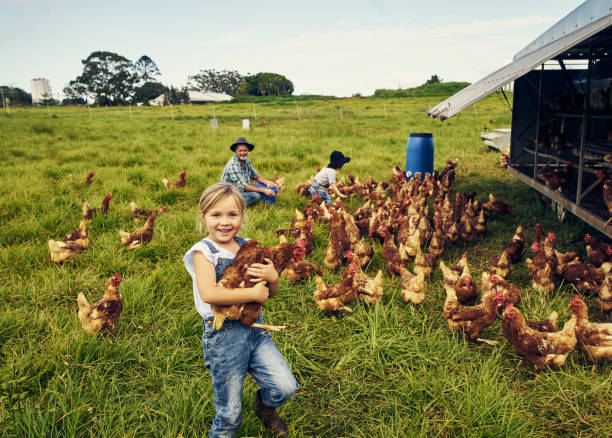
- Economic Viability: Some unconventional approaches may be more labor-intensive or require higher upfront costs.
- Market Demand: The market for niche livestock products may be limited, and building a customer base can be challenging.
- Regulatory Compliance: Complying with animal welfare and organic standards can involve additional paperwork and inspections.
Livestock farming with a twist is a journey into the heart of agriculture’s future—a future that balances tradition with innovation, and where animals are treated as partners in sustainability. Whether you’re a farmer committed to ethical practices, a chef exploring unique flavors, or simply someone who values the welfare of animals and the planet, these twists in livestock farming offer a path to more flavorful, sustainable, and humane food systems. So, venture into the world where every twist in the farming story adds flavor to our culinary heritage and sustainability to our future.
14. Agribusiness Consulting
agribusiness consulting has emerged as a crucial support system for farmers, agricultural businesses, and industry stakeholders. These consultants serve as guides, strategists, and problem-solvers, helping to navigate the complexities of modern agriculture. In this article, we’ll delve into the world of agribusiness consulting, where expertise meets innovation to cultivate sustainable growth and prosperity in farming.
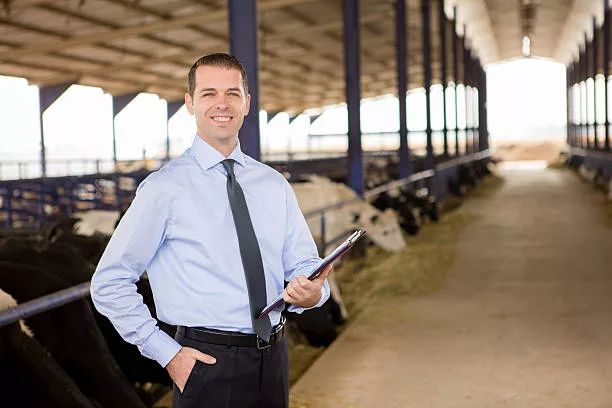
What is Agribusiness Consulting?
Agribusiness consulting is a specialized field that offers strategic advice, expertise, and solutions to individuals, organizations, and businesses involved in agriculture and related industries. These consultants work across various sectors, including crop production, livestock farming, agtech, food processing, and distribution.
Key Aspects of Agribusiness Consulting:
- Market Analysis: Consultants analyze market trends, consumer behavior, and competition to help businesses make informed decisions.
- Business Strategy: They assist in developing comprehensive business plans, including strategies for growth, diversification, and risk management.
- Technology Integration: Agribusiness consultants help clients adopt and integrate technology solutions, such as precision agriculture and data analytics.
- Sustainability: They provide guidance on sustainable farming practices, environmental compliance, and resource management.
- Financial Management: Consultants assist in financial planning, budgeting, and accessing funding or grants.
Services Offered by Agribusiness Consultants:
- Strategic Planning: Consultants help businesses set goals, define strategies, and create action plans for growth and profitability.
- Risk Assessment: They identify and assess risks associated with farming operations, market volatility, and regulatory changes.
- Market Entry and Expansion: Consultants provide insights and support for entering new markets or expanding existing ones.
- Technology Adoption: They recommend and implement innovative technologies that improve efficiency and productivity.
- Sustainability and Compliance: Agribusiness consultants assist clients in adopting sustainable practices and complying with regulations.
Advantages of Agribusiness Consulting:
- Expertise: Consultants bring industry knowledge and experience, offering valuable insights and solutions.
- Efficiency: Their guidance can lead to streamlined operations, cost savings, and increased profitability.
- Innovation: Consultants keep businesses updated with the latest technologies and practices, fostering innovation.
- Risk Mitigation: They help identify and address potential risks, reducing vulnerabilities.
- Sustainable Practices: Consultants promote environmentally friendly and socially responsible practices.
Challenges and Considerations:
Agribusiness consulting also faces some challenges:
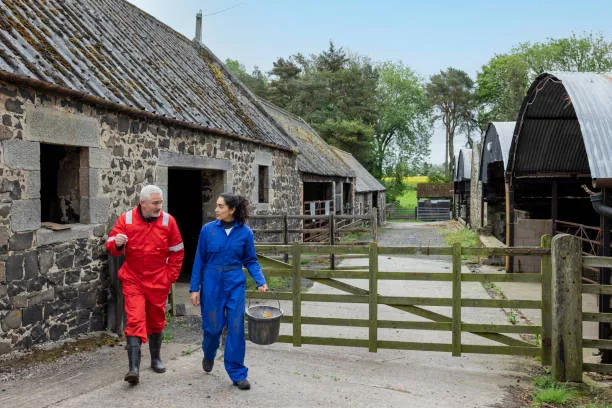
- Diverse Client Needs: Consultants must adapt their services to meet the unique needs of various clients and sectors within agriculture.
- Market Volatility: Agricultural markets can be highly volatile, impacting the strategies and recommendations of consultants.
- Regulatory Changes: Consultants must stay informed about evolving agricultural policies and regulations.
Agribusiness consulting is the compass that guides the agricultural industry toward sustainable growth, innovation, and prosperity. Whether you’re a farmer seeking to optimize your operations, an agricultural business navigating market complexities, or an industry stakeholder striving to make a difference, agribusiness consultants offer a bridge to success. They are the partners who turn challenges into opportunities, ensuring that agriculture continues to feed the world while embracing sustainability and innovation. So, embark on a journey into the world of agribusiness consulting, where expertise cultivates a brighter and more prosperous future for farming and food production.
15. Edible Landscaping
Imagine stepping into your backyard and being greeted not only by the sight of vibrant flowers and lush greenery but also by the delicious aroma of herbs, the taste of ripe berries, and the joy of plucking fresh vegetables. This is the magic of edible landscaping, a creative and sustainable approach to gardening that blends ornamental plants with edible delights. In this article, we’ll journey into the world of edible landscaping, where aesthetics and practicality unite to transform your outdoor space into a feast for the senses.
What is Edible Landscaping?
Edible landscaping is a design approach that integrates edible plants, such as fruits, vegetables, herbs, and edible flowers, into traditional landscaping practices. It’s a fusion of horticulture and culinary artistry, turning gardens into not only visually appealing spaces but also sources of fresh, homegrown produce.

Key Aspects of Edible Landscaping:
- Plant Selection: Edible landscapes feature a diverse selection of edible plants, including fruit trees, berry bushes, culinary herbs, and edible flowers.
- Aesthetic Appeal: Design principles are used to create visually pleasing arrangements, with edible plants woven seamlessly among ornamental ones.
- Functionality: Edible landscapes are designed to be both beautiful and practical, ensuring easy access to the harvest.
- Sustainability: Many edible landscapes embrace organic and sustainable gardening practices, minimizing chemical use and conserving resources.
Creating an Edible Landscape:
- Plant Selection: Choose edible plants that thrive in your climate and soil conditions. Consider a mix of perennial and annual crops for year-round interest.
- Layout and Design: Plan the layout of your edible landscape, integrating edible plants with ornamentals to create visually appealing combinations.
- Companion Planting: Utilize companion planting strategies to promote biodiversity and deter pests naturally.
- Maintenance: Regular maintenance, including pruning, weeding, and fertilizing, is essential to keep your edible landscape healthy and productive.
Advantages of Edible Landscaping:
- Homegrown Produce: Edible landscaping allows you to grow your own fresh, organic produce right in your backyard.
- Beauty and Aesthetics: It combines the beauty of traditional landscaping with the practicality of food production.
- Sustainability: Edible landscapes promote sustainability by reducing food miles and conserving resources.
- Educational Value: They provide opportunities to learn about gardening and where food comes from.
- Connection to Nature: Edible landscapes foster a deeper connection to the natural world and the seasons.
Challenges and Considerations:
Edible landscaping may also present some challenges:

- Pest Management: Like any garden, edible landscapes can be susceptible to pests and diseases, which may require management strategies.
- Maintenance: Proper care and maintenance are essential to ensure healthy plant growth and bountiful harvests.
- Climate Considerations: The choice of edible plants should align with your local climate and growing conditions.
Edible landscaping is more than a garden; it’s an experience that engages all your senses, from the vibrant colors of flowers to the rich flavors of homegrown produce. Whether you have a sprawling backyard or a cozy urban balcony, edible landscaping invites you to reimagine your outdoor space as a source of beauty, nourishment, and connection to the natural world. So, step into the world of edible landscaping, where each plant is a brushstroke on the canvas of your outdoor oasis, and every harvest is a celebration of nature’s bounty, right in your own backyard.
16. Mushroom Farming
Beneath the forest canopy, hidden in the darkness, and even in our own backyards, a magical world of fungi awaits discovery. Mushroom farming, once a mysterious art, has evolved into a thriving agricultural industry that produces not only delicious delicacies but also valuable medicinal and industrial products. In this article, we’ll journey into the captivating realm of mushroom farming, where science, nature, and culinary delight converge.

What is Mushroom Farming?
Mushroom farming, also known as mushroom cultivation or myciculture, is the practice of growing mushrooms for food, medicinal purposes, or industrial applications. Mushrooms are fungi that belong to a diverse group of organisms distinct from plants and animals.
Key Aspects of Mushroom Farming:
- Selecting Mushroom Species: There are numerous mushroom species suitable for cultivation, including common varieties like button mushrooms, shiitake, oyster mushrooms, and more exotic options like maitake and lion’s mane.
- Substrate Preparation: Mushrooms grow on a substrate, which can be a variety of organic materials such as straw, wood chips, sawdust, or agricultural waste. Preparing the substrate is a crucial step.
- Inoculation: Mushroom spores or mycelium (the vegetative part of the fungus) are introduced to the substrate to initiate growth.
- Incubation: The inoculated substrate is kept in a controlled environment with specific temperature and humidity conditions to encourage mycelial colonization.
- Fruiting: After colonization, mushrooms start to fruit, forming the familiar caps and stems that we harvest for consumption.
- Harvesting: Mushrooms are carefully harvested at the right stage of development to ensure optimal flavor and texture.
Types of Cultivated Mushrooms:
Agaricus bisporus: Includes white button mushrooms and cremini, commonly used in salads, soups, and various dishes.

Shiitake (Lentinula edodes): Known for its savory flavor, shiitake mushrooms are widely used in Asian cuisine.
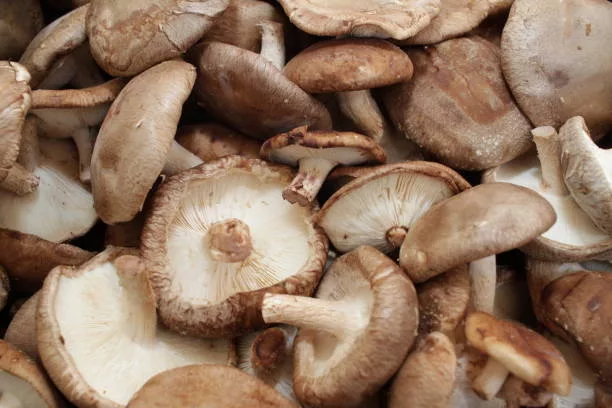
Oyster Mushrooms (Pleurotus ostreatus): Named for their resemblance to oysters, these mushrooms come in various colors and have a mild, delicate flavor.
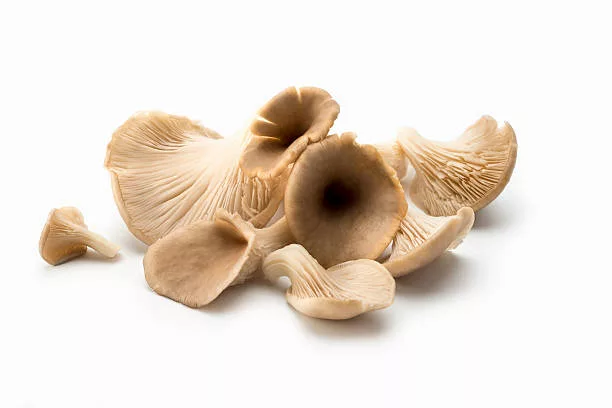
Enoki (Flammulina velutipes): Recognized by their long, slender stems and small caps, enoki mushrooms have a mild, slightly fruity taste.

Maitake (Grifola frondosa): Also called hen-of-the-woods, maitake mushrooms have a robust flavor and are often used in Japanese and Chinese dishes.

Advantages of Mushroom Farming:
- Nutritional Value: Mushrooms are a good source of protein, vitamins, and minerals, making them a healthy addition to diets.
- Sustainability: Mushroom farming can utilize agricultural waste materials, reducing environmental impact.
- Medicinal Properties: Certain mushroom species, like reishi and cordyceps, are valued for their potential health benefits.
- Versatile Culinary Use: Mushrooms add depth of flavor and texture to a wide range of dishes, from soups to stir-fries.
Challenges and Considerations:
Mushroom farming comes with its own set of challenges:
- Contamination: Maintaining sterile conditions during cultivation is crucial to prevent contamination by competing microorganisms.
- Environmental Control: Precise control of temperature, humidity, and light is essential for successful mushroom cultivation.
- Specialized Knowledge: Cultivating different mushroom species may require specific expertise and techniques.
Mushroom farming is a journey into the enchanting world of fungi, where every harvest is a testament to the marvels of nature. Whether you’re a gourmet chef seeking unique flavors, a health enthusiast exploring medicinal mushrooms, or a farmer embracing sustainable agriculture, mushroom farming offers a diverse and rewarding experience. So, step into the realm of mushroom cultivation, where science, art, and culinary delight intertwine to bring Earth’s hidden treasures to your table.
17. Insect Farming
In the quest for sustainable food sources and innovative protein options, insect farming has emerged as a game-changer. What might have once been met with skepticism is now a growing industry that promises not only ecological benefits but also nutritional advantages. In this article, we’ll journey into the fascinating world of insect farming, where tiny creatures are redefining our perceptions of food and sustainability.
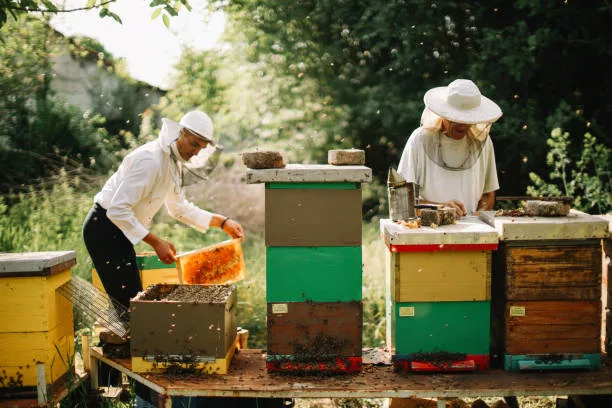
What is Insect Farming?
Insect farming, also known as entomophagy, is the practice of breeding and rearing insects for human consumption and other applications. It involves raising various species of insects, from crickets and mealworms to ants and grasshoppers, in controlled environments.
Key Aspects of Insect Farming:
- Insect Species: There are over 2,000 edible insect species worldwide. The choice of species depends on factors such as taste, nutritional content, and suitability for farming.
- Rearing Conditions: Insect farms provide optimal conditions for growth, including temperature, humidity, and diet, to ensure healthy and thriving insect populations.
- Sustainability: Insects are highly efficient at converting feed into protein and have a significantly lower environmental footprint compared to traditional livestock.
- Harvesting: Insects are harvested at specific stages of development when they are most nutritious and suitable for consumption.
Types of Edible Insects:
Crickets: High in protein and rich in nutrients like B vitamins and iron, crickets are often used in protein bars, snacks, and even as cricket flour for baking.

Mealworms: These larvae of darkling beetles are versatile and can be used in a variety of dishes, from savory to sweet.

Black Soldier Flies: Used for their high-fat content, black soldier fly larvae are processed into oils and protein-rich meals for animal feed.

Grasshoppers: Commonly consumed in many countries, grasshoppers are a good source of protein.

Silkworms: In some cultures, silkworm pupae are considered a delicacy and are rich in protein and healthy fats.

Advantages of Insect Farming:
- Sustainability: Insects require less land, water, and feed compared to traditional livestock, making them a more sustainable protein source.
- Nutritional Value: Insects are rich in protein, vitamins, and minerals, making them a nutritious addition to diets.
- Versatility: Insects can be incorporated into a wide range of food products, from protein bars to pasta.
- Reduced Environmental Impact: Insect farming produces fewer greenhouse gas emissions and requires less water and land compared to traditional livestock farming.
Challenges and Considerations:
Insect farming faces several challenges:
- Cultural Acceptance: Overcoming cultural biases and promoting the consumption of insects can be a hurdle in some regions.
- Regulation: In many countries, there are regulatory challenges and standards to address regarding insect farming and food safety.
- Scale-up: Scaling insect farming operations to meet growing demand while maintaining quality and sustainability is a complex endeavor.
Insect farming is more than a culinary adventure; it’s a sustainable solution to global food challenges. Whether you’re an environmental advocate seeking eco-friendly protein sources, a gourmet explorer with a taste for the unconventional, or a farmer looking for a sustainable livestock alternative, insect farming offers a world of possibilities. So, venture into the realm of insect farming, where these tiny creatures are transforming our food systems and redefining the future of sustainable nutrition.
18. Agricultural Education and Training
In an ever-changing agricultural landscape, where innovation and sustainability are paramount, the role of agricultural education and training has never been more crucial. It’s a field that not only equips aspiring farmers and agribusiness professionals with knowledge and skills but also cultivates a deep understanding of the intricate relationship between food, the environment, and society. In this article, we’ll delve into the world of agricultural education and training, where the seeds of knowledge are sown and the future of farming takes root.
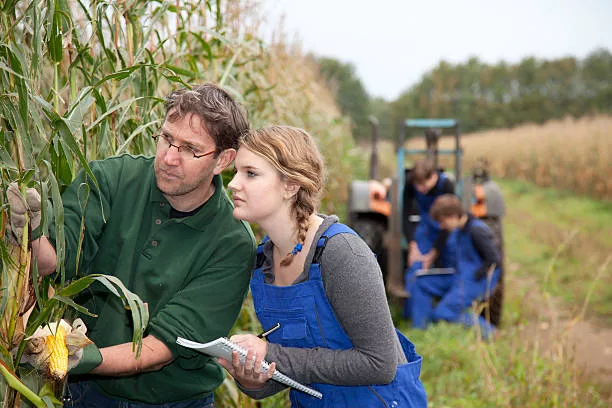
The Significance of Agricultural Education and Training:
Agricultural education and training encompass a wide range of formal and informal programs, courses, and resources designed to enhance the competencies of individuals and communities engaged in agriculture. These initiatives serve various purposes:
- Professional Development: They equip agricultural professionals with the latest knowledge and practices, helping them stay competitive and innovative.
- Youth Engagement: Agricultural education introduces young people to the world of farming, inspiring the next generation of farmers and agricultural scientists.
- Sustainable Practices: Training programs promote sustainable farming practices, emphasizing soil health, resource conservation, and environmental stewardship.
- Rural Empowerment: In rural communities, agricultural education can empower individuals with the skills and confidence to improve their livelihoods.
Key Aspects of Agricultural Education and Training:
- Curriculum Development: Institutions and organizations develop educational curricula that cover a wide range of agricultural topics, from crop management to agribusiness strategies.
- Hands-On Training: Practical experience is a cornerstone of agricultural education, with opportunities for students to engage in farming activities, research, and experimentation.
- Research and Innovation: Educational institutions often conduct research to discover new agricultural techniques and technologies that can benefit farmers and the industry.
- Extension Services: Agricultural extension services provide valuable information and resources to farmers, helping them implement best practices and address challenges.
Types of Agricultural Education and Training:
- Formal Education: This includes agricultural degree programs offered by universities and colleges, ranging from bachelor’s to doctoral degrees.
- Vocational Training: Vocational schools and community colleges offer practical training programs, often focused on specific skills or trades related to agriculture.
- Extension Programs: Agricultural extension services provide outreach and education to farmers, typically through government agencies or agricultural organizations.
- Online Courses: The digital age has brought a proliferation of online courses and webinars, making agricultural education accessible to a global audience.
Advantages of Agricultural Education and Training:
- Knowledge Transfer: Education and training help disseminate valuable agricultural knowledge and best practices.
- Innovation: They foster innovation by encouraging research and experimentation in farming techniques and technologies.
- Sustainability: Training programs promote sustainable agriculture, which is essential for the long-term health of the planet.
- Economic Growth: A well-trained agricultural workforce contributes to economic growth by increasing agricultural productivity.
Challenges and Considerations:
Agricultural education and training face several challenges:
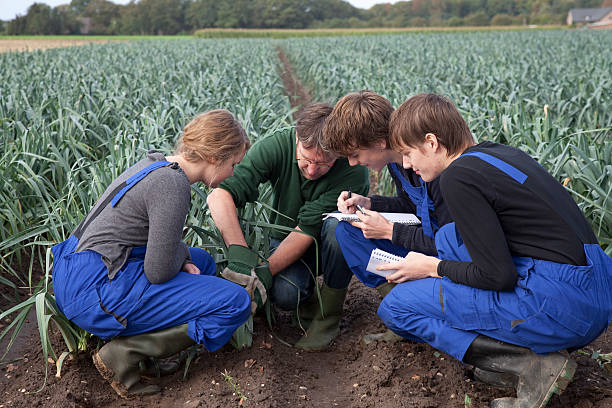
- Access: Not everyone in rural areas or developing countries has easy access to quality agricultural education and training.
- Technology Integration: Keeping educational programs updated with the latest agricultural technologies can be a challenge.
- Funding: Financial resources are essential for sustaining educational programs and ensuring their effectiveness.
Agricultural education and training are the roots from which a thriving and sustainable agricultural sector grows. Whether you’re a student eager to learn, a farmer seeking to expand your knowledge, or a policymaker shaping the future of agriculture, this field plays a pivotal role in nurturing the skills, wisdom, and innovation needed to feed a growing world population while safeguarding our planet. So, embrace the world of agricultural education and training, where each lesson is a step toward a brighter and more sustainable agricultural future.
19. Value-Added Processing
In the world of agriculture, value-added processing is a transformative concept that takes raw, unprocessed agricultural products and turns them into something more. It’s about adding value, enhancing quality, and meeting the diverse demands of consumers. In this article, we’ll embark on a journey into the realm of value-added processing, where innovation and creativity converge to breathe new life into agricultural products.
What is Value-Added Processing?
Value-added processing refers to the practice of taking raw agricultural products, such as fruits, vegetables, grains, or livestock, and processing them into higher-value products through various methods. These methods can include preservation, transformation, packaging, and marketing. The goal is to make agricultural products more appealing, convenient, and profitable.

Key Aspects of Value-Added Processing:
- Product Diversification: Value-added processing allows for the creation of a wide range of products, including jams, sauces, dried fruits, cheeses, and more.
- Quality Enhancement: Processing can improve the quality, flavor, and shelf life of agricultural products.
- Packaging and Presentation: Attractive packaging and presentation can enhance the marketability of value-added products.
- Market Expansion: Value-added products often open doors to new markets and consumer segments.
Examples of Value-Added Processing:
Fruit Preserves: Turning fresh fruits into jams, jellies, and preserves adds value by extending the product’s shelf life and creating unique flavors.

Cheese Making: The transformation of milk into various cheese varieties adds value through aging and flavor development.
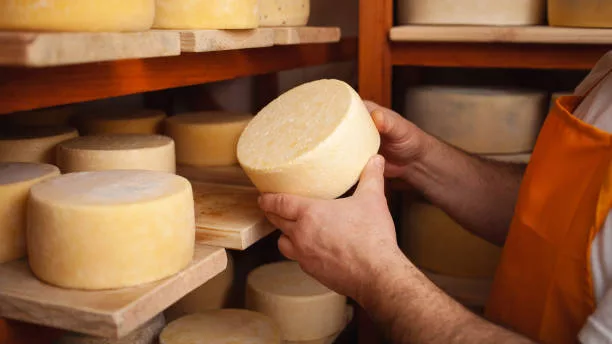
Grain Milling: Milling grains into flour or producing specialty flours like gluten-free options offers added value to consumers.

Smoking and Curing Meats: These processes not only preserve meat but also create distinct flavors and textures.

Baking and Confectionery: Converting basic ingredients like flour, sugar, and cocoa into baked goods and chocolates is a classic form of value-added processing.

Advantages of Value-Added Processing:
- Increased Profitability: Value-added products often command higher prices than raw commodities, leading to increased profits.
- Market Differentiation: Unique and high-quality processed products stand out in the market, attracting discerning consumers.
- Waste Reduction: Value-added processing can utilize surplus or imperfect produce that might otherwise go to waste.
- Job Creation: Processing activities often require skilled labor, contributing to job creation in rural and agricultural communities.
Challenges and Considerations:
Value-added processing comes with its own set of challenges:
- Quality Control: Maintaining consistent quality in value-added products is essential for consumer trust and satisfaction.
- Regulations: Complying with food safety and labeling regulations can be complex and costly.
- Supply Chain Management: Coordinating the supply chain for processing operations requires careful planning and logistics.
Value-added processing is the alchemy of agriculture, where basic ingredients are transformed into something greater, something that not only nourishes but also delights the senses. Whether you’re a farmer seeking to diversify your product offerings, an entrepreneur with a culinary vision, or simply a consumer in search of unique and flavorful options, value-added processing offers a world of possibilities. So, immerse yourself in the world of value-added processing, where innovation and creativity merge to elevate agricultural products to new heights of taste, quality, and value.
20. Renewable Energy on Farms
In the ever-evolving world of agriculture, where sustainability is becoming increasingly essential, renewable energy has emerged as a powerful tool for farmers to reduce their environmental footprint, cut costs, and secure a more sustainable future. In this article, we’ll delve into the realm of renewable energy on farms, where the power of the sun, wind, and other natural resources is harnessed to cultivate not just crops, but also a greener, more sustainable world.

The Role of Renewable Energy on Farms:
Renewable energy on farms refers to the production and utilization of clean energy sources such as solar, wind, hydro, and biomass to power agricultural operations. These sustainable energy sources offer several benefits to farmers and the environment:
- Cost Savings: By generating their own renewable energy, farmers can reduce or eliminate electricity bills, leading to significant cost savings.
- Environmental Benefits: Renewable energy sources produce little to no greenhouse gas emissions, contributing to reduced carbon footprints and a healthier planet.
- Energy Independence: Farm-based renewable energy systems provide a degree of energy independence, reducing reliance on external energy sources and price fluctuations.
- Diversification: Integrating renewable energy into farm operations can diversify income streams, especially in regions with favorable incentives and subsidies.
Types of Renewable Energy on Farms:
Solar Power: Solar panels are installed on farm buildings or ground-mounted arrays to convert sunlight into electricity.

Wind Power: Wind turbines capture the kinetic energy of the wind and convert it into electrical power.
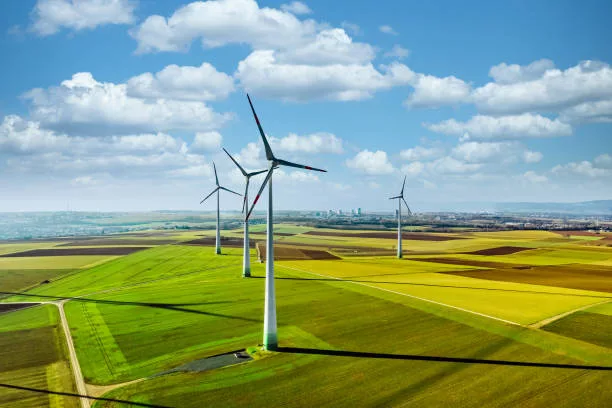
Hydropower: Farms near water sources can utilize micro-hydroelectric systems to generate electricity from flowing water.
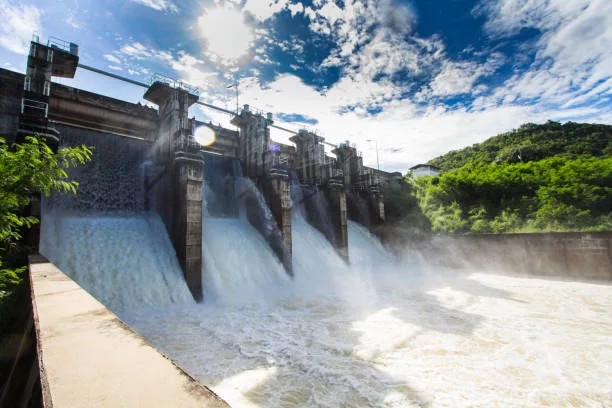
Biomass Energy: Biomass, such as crop residues or organic waste, can be converted into biogas or biofuels for on-farm energy production.

Applications of Renewable Energy on Farms:
- Electricity Generation: Renewable energy sources can power farm operations, including irrigation, lighting, and machinery.
- Heating and Cooling: Biomass or solar thermal systems can provide heating and cooling for farm buildings.
- Vehicle Fuels: Biofuels produced from farm biomass can fuel vehicles and machinery.
- Energy Storage: Battery systems can store excess energy generated during peak times for use when needed.
Advantages of Renewable Energy on Farms:
- Sustainability: Renewable energy sources reduce the environmental impact of farming and promote sustainable practices.
- Cost Efficiency: Over time, renewable energy systems can pay for themselves through energy savings and potential income from excess energy production.
- Energy Reliability: On-farm energy generation can enhance energy reliability in remote or off-grid areas.
- Reduced Emissions: Renewable energy helps reduce greenhouse gas emissions, contributing to climate change mitigation.
Challenges and Considerations:
- Upfront Costs: The initial investment in renewable energy systems can be substantial, although incentives and subsidies may help offset these costs.
- Intermittency: Solar and wind power generation can be intermittent, requiring energy storage solutions for reliable supply.
- Maintenance: Regular maintenance and occasional equipment replacement may be necessary.
Renewable energy on farms is not just a trend; it’s a transformative force that empowers farmers to cultivate sustainability while reducing costs and environmental impact. Whether you’re a farmer seeking to embrace green practices, an advocate for renewable energy adoption, or simply someone who values the harmonious relationship between agriculture and the environment, renewable energy on farms offers a path to a greener, more sustainable future. So, embark on the journey into the world of renewable energy on farms, where the sun, wind, and the Earth’s resources converge to power not just farms, but also a more sustainable world for all.
Conclusion
In conclusion, agriculture is a dynamic and ever-evolving field that continues to adapt and innovate to meet the growing challenges of our world. From innovative business ideas to sustainable practices, and from the cultivation of unique crops to the exploration of alternative farming methods, the agricultural landscape is teeming with possibilities.
As we’ve explored the top 20 innovative agriculture business ideas, we’ve uncovered a rich tapestry of opportunities for entrepreneurs, farmers, and visionaries alike. These ideas span a wide range of sectors, from technology-driven agtech startups to the timeless traditions of organic farming and beekeeping. Each concept holds the potential not only for financial success but also for making a positive impact on our environment and communities.
Furthermore, the world of agricultural education and training plays a pivotal role in shaping the future of farming. It equips individuals with the knowledge and skills needed to navigate the complexities of modern agriculture while promoting sustainability, innovation, and rural empowerment.
Value-added processing, whether it’s turning fresh produce into gourmet products or harnessing the power of renewable energy on farms, is a testament to the creativity and resourcefulness of those in the agricultural industry. These practices add value, reduce waste, and contribute to a more sustainable and profitable future.
In summary, the world of agriculture is not just about planting seeds and harvesting crops; it’s a vibrant and multifaceted realm where tradition meets innovation, and where the pursuit of sustainability goes hand in hand with the quest for profitability. Whether you’re a farmer, an entrepreneur, a consumer, or simply someone interested in the future of food and farming, the possibilities are endless in this ever-evolving field. So, let’s continue to explore, learn, and embrace the innovations that will shape the future of agriculture, ensuring a bountiful and sustainable harvest for generations to come.
READ, ALSO >>>> Discover The 10 Proven Strategies for Successful Food and Agribusiness Management





